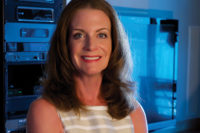
The well-documented growth of the personal emergency response systems (PERS) industry is a simple matter of rising numbers. The Department of Health and Human Services’ Administration on Aging reports that persons 65 years or older numbered 38.9 million in 2008, but will double up, growing to around 72.1 million by 2030.
It is also proven that many in the security industry have been successful in adding PERS and growing this part of their business. “Our dealers in the PERS industry have been experiencing double-digit growth,” shares Christopher Baskin, chief executive officer (CEO) of American Two-Way, North Hollywood, Calif.
With a considerably lesser amount of standards and certification/licensing requirements than the alarm industry requires, there is also a sense that the transition might by easy. Many in the industry caution against this attitude. In fact, the message from PERS veterans is cautionary: Only serious, well-researched entrants, please. The easily distracted and dissuaded need not apply. More importantly, what you see today won’t necessarily be here tomorrow. PERS is an industry on the move. Technology is changing, standards and regulation are coming, and competition is increasing.
With that in mind, here are a few PERS realities not to overlook before entering the industry.
To begin, while there are many concrete similarities between PERS and the alarm industry, there are equally as many differences, so alarm dealers should not rely solely on their experiences in the alarm industry for success in PERS.
Howard Feldman, president of Pioneer Emergency Response Services Inc. and Pioneer Security Services Inc., Solana Beach, Calif., started Pioneer as a residential security and fire alarm company before transitioning to medical alert systems following a personal experience with them, so he has seen both industries — and their differences.
“With security systems you are trying to keep bad guys out. With PERS you are working to get the good guys inside during an event. With security your operators are trained to get off calls as quickly as possible. With PERS, operators need to be trained to stay on the phone without ever making the person feel rushed. In fact, we use a second operator to make the outgoing calls, so you need to consider the extra manpower.”
Because of the differences, Howard Teicher, CEO, Medical Alarm Concepts, Plymouth Meeting, Pa., stresses research — and more research. “The biggest thing necessary is research of products, current technology, and the industry as a whole,” he says. “If you think you know everything, you really know nothing. Without knowledge, someone will end up buying a unit and find they can’t do anything with it because it doesn’t fit the PERS service they think they are trying to offer.”
The level of involvement is another of the big changes PERS presents, especially regarding operators. Baskin recommends outsourcing monitoring until a company feels committed to training operators or adding staff.
“Security dealers really need do their homework, especially at the central station level,” Baskin says. “Everything is different, especially for operators. Your operators need to learn to stay on the line instead of off quickly, and they must recognize when to talk louder and slower and how to relay medical data and understand HIPAA rules — and it takes training and practice. Working with third-party monitoring can give you time to set that up.”
PERS growth is partially driven by the high RMR. As Ron Bodnar, general manager of SafetyCare Technologies LLC, Reading, Pa., explains, “PERS is not like the burglar and fire alarm industries that have had their margins shrunk tremendously. In PERS, the margin is still higher.” But time will tell how long that will last.
Time will also bring changes to the regulations governing the PERS industry today. Currently, a handful of states and a few municipalities have PERS regulations, but most expect that to change. Anyone entering the PERS industry thinking it will always be widely unregulated needs to adjust their long-term plan.
Dealers also have a role to play in keeping unwanted negative attention away from the industry, especially regarding false alarms.
“Dealers need to understand the products and their abilities and they can’t simply attempt to outdo their competitors by providing advanced services that will cause false alarms when done improperly,” Baskin says.
In short, know what you are doing and don’t offer more than you can deliver.
To help with the learning curve, some advise joining a dealer program right away.
“Some PERS manufacturers have dealer programs that companies can check out,” Teicher says. “A dealer program generally gives you better pricing, a better level of support, and lets you come together with other dealers to exchange ideas. It is a huge advantage working with a group of people who know what they are doing rather than being a one-man band.”
Joining an industry-specific association such as the Medical Alert Monitoring Association (MAMA) is also recommended. MAMA is a growing organization that assists in both developing standards and regulations, while protecting PERS companies’ interests.
“As the industry matures, more standards and regulations will come, and MAMA will be very instrumental in helping deliver rules and regulations,” observes Les Gold, legal counsel to MAMA and contributing legal columnist at SDM. “It is a very active and very interactive association.”
MAMA recently formed a standards committee this spring. “We hope to within 12 to 24 months release standards that will form a baseline for the industry and also be an excellent guideline to assist anyone in or entering the PERS space,” Baskin says.
John Jennings, CEO of Safeguard Security and Communications Inc., Scottsdale, Ariz., advises patience, patience, and more patience if choosing to pursue the PERS market. “If your major emphasis today is doing alarm monitoring, then the PERS monitoring will take some time to get used to especially because it is a lot more involved,” he says. “You have to allow time for that transition.”
Most importantly, a passion for service and the elderly is critical to success, says Andy Schoonover, president of Valued Relationships Inc. (VRI), Dayton, Ohio.
“The first question we ask people who interview with us is: ‘Why do you want to work for us?’, Schoonover describes. “If their answer lacks a description of their passion for helping the elderly and disabled, then they are not the right fit. My advice to new dealers is one, make sure you have that passion. From our experience companies that treat this as a ‘money only’ venture don’t do well. Two, make sure the monitoring center that you decide to go with has that same passion.”







